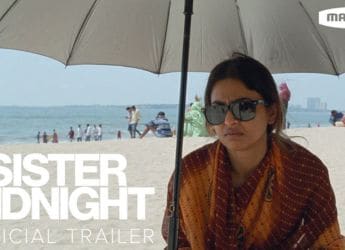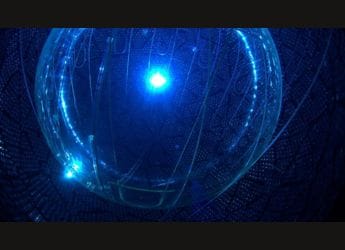- Home
- Entertainment
- Entertainment Features
- Dynamic Optimiser is Netflix’s Secret Weapon Against Buffering
Dynamic Optimiser is Netflix’s Secret Weapon Against Buffering

Are we nearing a day where the humble 3G connections most of us still use in India are also going to be fast enough to watch movies on our phones without too much trouble? According to Tod Yellin, VP of Product for Netflix, India is one of just three countries (along with South Korea and Japan) where Netflix viewing on mobile devices exceeds that on laptops and televisions. And a new technology that Netflix will be rolling out in approximately two months time could be the key to ensuring that these users don't blow past their monthly mobile data caps in just a matter of hours.
Like any other video service, Netflix encodes the videos you watch at multiple levels of quality. The idea is simple - to deliver the highest quality possible for your connection, constantly checking your data speed. If your connection is slower, it can simply drop the quality little by little until it reaches the quality that's needed for you to get a buffering-free experience. The problem with this is that you don't need the exact same quality for all titles to get the same perceived quality. Netflix realised this back in 2015, and introduced a concept called Title Level Encoding. Essentially, it realised that a detailed live action scene requires much more information, while a simple cartoon such as Bojack Horseman that has flat colours could be compressed further without any loss in quality.
Then Netflix had an experience Yellin describes as "annoying".
"So this one Barbie cartoon, it's like Bojack, simple animation, but there's one part, just one part, all this glitter and shine that she's spreading through and keep everyone happy,” Yellin told Gadgets 360 at the sidelines of the Mobile World Congress in Barcelona. "There was a lot of visual information in that one part, one bit, of that program. So what you had to do was encode it like it was this big action movie, because you have to take the worst case, because of that one scene."
Enter Dynamic Optimiser that lets Netflix go beyond per-title optimisation, and start optimising the individual shots in movies and shows. "Google offered something open source called VP9 that enabled us to try something new, and also gave us a better picture, with less bandwidth," he said. "So now we're talking about the lowest [bandwidth requirements] we can go."
As Netflix grows around the world - and as mobile usage becomes more the norm - maximising data utilisation, or as Yellin puts it, getting the most bang for your bit, is becoming essential.
"We've always put a good amount of effort into mobile but we've doubled down in the last year and we're probably going to continue doing that this year and the next," said Yellin.
Netflix is working on other parts of its technology stack as well - for example, Yellin talks about Netflix's Open Connect boxes, specialised video servers that the company installs at ISP locations around the world to reduce the latency involved in delivering video content by bringing it physically closer to the user. This is something Netflix first spoke about last year and since then the number of Open Connect boxes around the world has surged.
![]()
A Netflix Open Connect server
"We purchase these boxes, we build them, and we take this to the local ISPs," said Yellin. "We tell them, we'll put this in, you don't have to do anything - the advantage to you is, we're taking a lot of weight off the Internet, because it doesn't have to go through the whole Internet to get to somebody's home. It's a big advantage and thus the Netflix consumer is going to get higher quality, a better picture, less latency." According to Yellin, the company has started installing Open Connect boxes in India along with other countries, and will be adding more in the coming months as well.
A much bigger part of the equation is bringing down the data being used by Netflix, as its CEO Reed Hastings pointed out on the MWC stage earlier this week. Hastings talked about making buffering a thing of the past, and Yellin explains how it will happen with the Dynamic Optimiser.
Yellin demonstrated this showing a clip from Stranger Things, and another from The Crown. In the case of Stranger things, the clip was blurry and hard to watch at 100Kbps, but then with Dynamic Optimiser, the quality went up appreciably. In the case of The Crown, the clip at 555Kbps looked exactly the same as a clip at half the bandwidth.
"What we figured out by using this new codec, VP9, and combining it by going shot by shot, encoding different bits, we can basically, get a much sharper picture," said Yellin. "This is 100Kb, that's what it needs for the video, you have to add about 40Kb for the audio, and then a little more for safety, so if in your home you're getting 200Kbps, you can get a picture that doesn't stop and now it's much sharper than it used to be."
Of course, shot by shot optimisation also means the encoding process is a lot more resource intensive than before. This is where Netflix’s massive cloud infrastructure place helps.
"It would have taken lot of time but we have this great infrastructure at Netflix, these millions of servers that are idle when customers are not streaming, so we have almost infinite compute capacity to leverage,” explains Ioannis Katsavounidis, Senior Research Scientist at Netflix. “Each shot we try many different types of encoding and then choose the absolute best combination."
Get your daily dose of tech news, reviews, and insights, in under 80 characters on Gadgets 360 Turbo. Connect with fellow tech lovers on our Forum. Follow us on X, Facebook, WhatsApp, Threads and Google News for instant updates. Catch all the action on our YouTube channel.
Related Stories
- Samsung Galaxy Unpacked 2025
- ChatGPT
- Redmi Note 14 Pro+
- iPhone 16
- Apple Vision Pro
- Oneplus 12
- OnePlus Nord CE 3 Lite 5G
- iPhone 13
- Xiaomi 14 Pro
- Oppo Find N3
- Tecno Spark Go (2023)
- Realme V30
- Best Phones Under 25000
- Samsung Galaxy S24 Series
- Cryptocurrency
- iQoo 12
- Samsung Galaxy S24 Ultra
- Giottus
- Samsung Galaxy Z Flip 5
- Apple 'Scary Fast'
- Housefull 5
- GoPro Hero 12 Black Review
- Invincible Season 2
- JioGlass
- HD Ready TV
- Laptop Under 50000
- Smartwatch Under 10000
- Latest Mobile Phones
- Compare Phones
- Redmi Note 15 5G
- Redmi Note 15 Pro 5G
- Redmi Note 15 Pro+ 5G
- Lava Play Max
- Poco C85 5G
- Honor Magic 8 Lite
- Jolla Phone
- Realme P4x 5G
- Asus ProArt P16
- MacBook Pro 14-inch (M5, 2025)
- OnePlus Pad Go 2
- Poco Pad M1
- Just Corseca Skywatch Pro
- Honor Watch X5
- Acerpure Nitro Z Series 100-inch QLED TV
- Samsung 43 Inch LED Ultra HD (4K) Smart TV (UA43UE81AFULXL)
- Asus ROG Ally
- Nintendo Switch Lite
- Haier 1.6 Ton 5 Star Inverter Split AC (HSU19G-MZAID5BN-INV)
- Haier 1.6 Ton 5 Star Inverter Split AC (HSU19G-MZAIM5BN-INV)

















